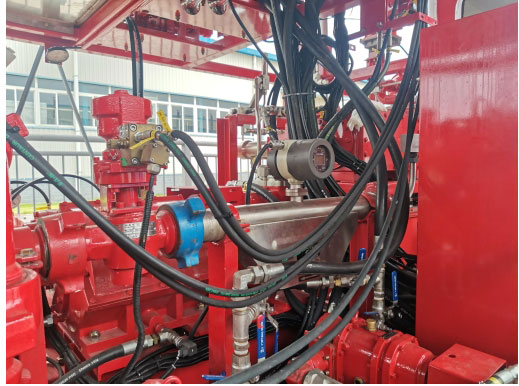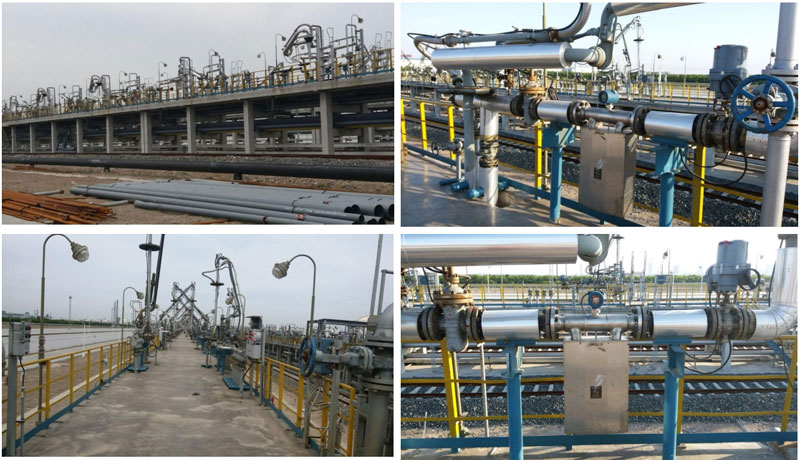Looking to refine industrial instrumentation Should medidor de flujo coriolis be integrated into smart factory systems

An advanced Coriolis meter leverages scientific principles exploiting rotational principles to precisely quantify mass transfer. As fluids progress through curled segments, dynamic forces generate displacements in the fluid’s trajectory, aligned with flow magnitude, enabling exact mass flow detection. Renowned for their functional diversity, built to measure assorted liquids with little resistance generated.
- Perks of Coriolis Flow Meters:
- Remarkable precision levels:
- Flexible flow type compatibility:
- Combined mass and viscosity metrics:
Appreciating Coriolis Effect Applications
Coriolis flow instruments embody precise measurement tools applied to gauge liquid movement across channels. Operating based on Coriolis effect physics, they measure mass flow by sensing deviations. Inside oscillatory conduits, the stream undergoes sideward deflection, governed by motion direction. Meter components detect these alterations, translating movements to output scaled to mass transfer.
- Roles of Coriolis flowmeters include:
- Operational regulation in chemical sectors
- Pharmaceutical manufacturing
- Sewage management
Determining Proper Meter Models
Coriolis meters excel in providing high fidelity for fluid flow analysis. Yet, with a range of available models, choosing the best fit for applications may be intricate. Key considerations when securing your Coriolis flow meter include: * **Characteristics of the fluid:** The fluid analyzed impacts construction and performance. * **Flow capacity range:** Meters handle within distinct flow limits. Ascertain your needs are met. * **Accuracy standards:** Different use cases required diverse precision levels. Outline these to decide on models. * **Operational environment:** Factors such as temperature, pressure, and fluid viscosity affect meter outcomes. * **System compatibility:** Assess integration and merging with existing infrastructure.Values of High-Tech Coriolis Systems
Next-generation flow sensors provide a broad range of strengths for industrial needs. Primarily, these meters offer outstanding measurement quality, facilitating precise liquid assessment. In addition, Coriolis meters provide simultaneous fluid composition analysis in one device, rendering them extraordinarily suited for critical measurement. Furthermore, their robustness enables operation in harsh scenarios.
- Subsequently, these devices see widespread use in domains like oil and gas, chemicals, food and beverage sectors, and pharmaceuticals.
Advanced Calibration Techniques for Coriolis Flowmeters
Stringent operational settings prioritize Coriolis flowmeter performance. Ensuring dependable, repeatable results demands state-of-the-art calibration methods. These exceed basic protocols by integrating precision hardware and detailed analysis.
Employment of standardized calibrators ensures integrity. By comparing meter outputs with known benchmarks, technicians detect divergences and apply corrections.
- Multi-point calibration, assessing various flow rates, yields holistic performance profiling across meter ranges.
- Advanced software assists data management and visualization, enabling trend detection.
Consistent use of advanced calibration ensures optimal meter accuracy, driving system excellence across industries.
Handling Conventional Instrument Difficulties
Coriolis meters provide trusted accuracy and adaptability yet face occasional bugs. Early issue identification is vital to reducing downtime and maintaining system reliability. Typical complications involve sensor contamination, often caused by improper setup, dirty sensing components, or flow disturbances. Sensor jitter may result from changing fluid properties, mechanical vibrations, or electromagnetic disturbances. Effective problem-solving requires thorough examination of conditions, sensor outputs, and operational logs.
- Scheduled maintenance for damage or contamination applies.
- Settings tuning maintains accuracy.
- Reviewing outputs aids early detection.
- Accurate setup helps reduce interference.
Applying best practices solves common Coriolis flowmeter challenges, ensuring reliable fluid monitoring and operational consistency.
Deploying Coriolis Flow Technology in Industrial Control
Devices supply precise volume determination within industrial applications. Utilizing the Coriolis effect triggered by fluid passage inside vibrating tubes, variations in tube displacements correspond to fluid fluid density. This property enables trustworthy quantification of fluid flows even in variable environments.
They serve well a wide scope of uses, including resource extraction. Their strength makes them suitable for rugged locations, and their connected output enables easy system implementation with manufacturing systems.
High Accuracy Flow Measurement with Coriolis Sensors
Coriolis sensors deliver dependable measurements across extensive applications. They employ angular mass effect to quantify mass flow, yielding remarkable precision under variable flow regimes. Compared with alternative flow technologies, Coriolis sensors provide instant readings, facilitating sharp analysis. Their dual ability to measure mass flow and density makes them ideal for comprehensive flow assessments. Furthermore, Coriolis sensors exhibit durability, thriving in rugged operating scenarios. This combination of precision qualifies Coriolis sensors as a leading choice for demanding flow measurement situations.Oil and Gas Industrial Applications of Coriolis Flowmeters
Coriolis flowmeters have proven themselves as dependable tools in the oil and gas field. Their capacity to simultaneously measure mass flow and fluid density renders them all-around for many operational tasks. In processing workflows, Coriolis meters facilitate monitoring fuel products in distribution networks. They also fulfill essential roles in process supervision and guarantee dependable metering coriolis flujometro for revenue tracking.Coriolis Flowmeter Applications for Water Systems
Coriolis instruments supply vital flow quantification for exact assessment in water management contexts. Utilizing mass effect principles, they observe path change through bent tubes. This detailed data supports real-time water flow oversight, vital for upgrading system efficiency.
- Implementations of Coriolis flowmeters in water systems involve broad processes, such as: distributing water to homes and industries, watching water deployment for irrigation and energy production, and managing water flow in processing plants.
- Gains for Coriolis flowmeters in this area present: superior sharpness, broad diversity across media, and lower operational cost requirements.
Boosting Measurement Accuracy via Coriolis Systems
Coriolis flowmeters have shown themselves as reliable solutions for tracking streams. These frameworks apply the Coriolis effect to ascertain both mass flow and fluid density. Incorporating Coriolis technology can refine measurement accuracy, lessen operating expenses, and present insightful data about process metrics. Their capability enables use in a comprehensive range of markets such as pharmaceutical manufacturing.
